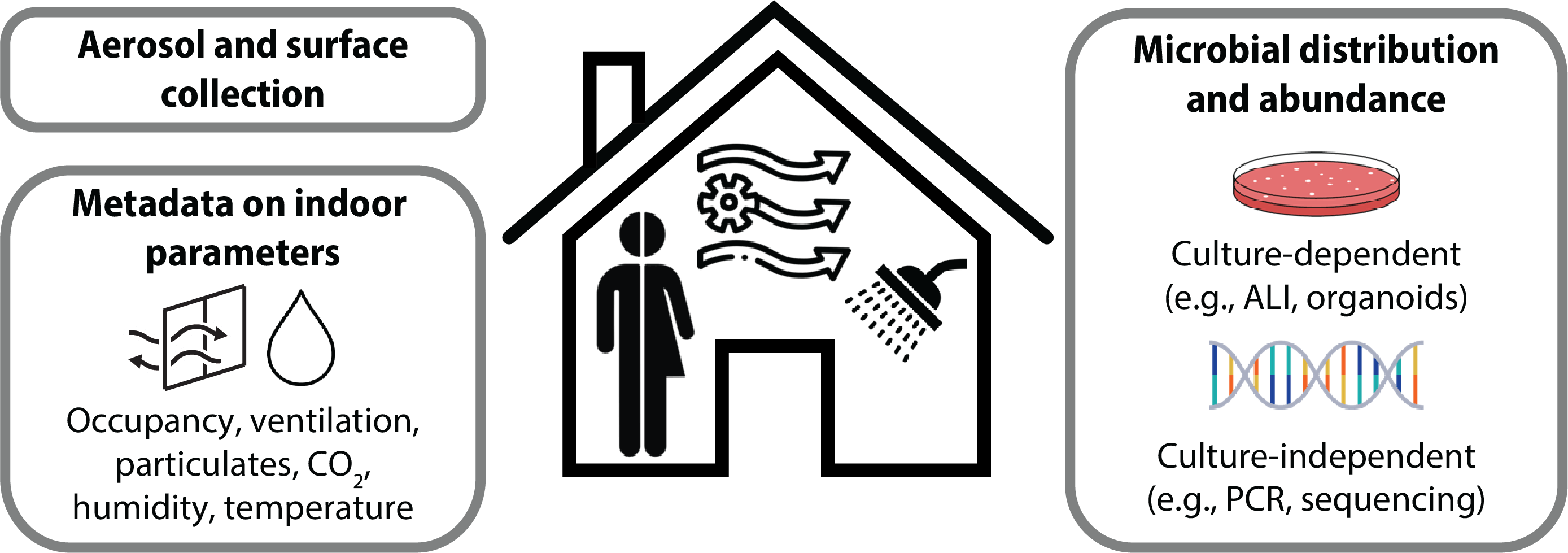Individuals in urban settings spend over > 90% of their time indoors. Complex interactions between people and microbes in air, water, or on surfaces in these spaces can be beneficial or detrimental to human health and well-being. Characterizing the microbial composition of the built environment is therefore critical for understanding potential human health exposures and resulting acute and chronic disease risks. Yet the spatiotemporal dynamics of many microorganisms in the built environment are not known. Associations and correlations of microbes with other indoor parameters, such as CO2, occupancy, ventilation, relative humidity, and temperature, are also lacking.
We use culture dependent and independent strategies to investigate spatiotemporal dynamics of microbes, with a focus on viruses, in real-world settings. The impact of engineering controls, such as ventilation, filtration, and disinfection, is of particular interest. By understanding the prevalence of microorganisms in important indoor environments, like classrooms, homes, and clinical settings, and how they fluctuate through space and time, we can tease apart exposure risks and identify strategies that will actively shape the microbiome to improve human health.

